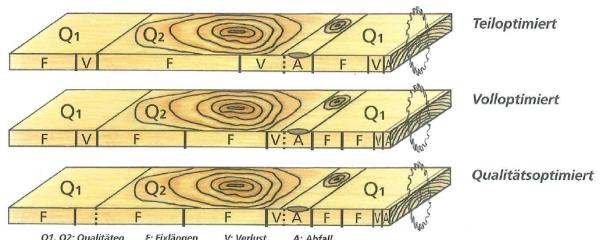Part optimisationTerm from the solid wood cutting process. Alternatively the term length optimization is used.
It is possible to input a maximum length for waste pieces so that the waste can be reduced. Short workpieces for finger jointing connections are produced as a result of this.
Further information from the field of panel sizing: Special feature of cross-cut saws with upstream measuring stationIf the distance between the measuring station and the saw blade of optimisation saws with upstream measuring station is shorter than the workpiece to be processed, the workpiece is already cut before it can be completely measured. Thus, only a partial optimisation (partial optimisation) can take place. In this case, the required marking strokes should not be set at the end of the workpiece segment, but at the beginning. This requires a change of the marking method in the control (e.g. DIMTER OPTICUT 200). |
CNC machining centres, robots894
Edgebanding, edge processing629
Saws, cutting machines439
Planers, 4-sided moulders188
Routers, shapers, tenoners, profilers181
Drilling, mortising machines135
Presses, clamps, joining machines201
Sanding machines320
Mechanisation, storage, packing technology200
Surface coating152
Production lines127
Heating, drying, waste chopping62
Dust extraction, compressed air, vacuum134
Assembly, worktables15
Lathes29
Tools, sharpening technology91
Equipment, Other machines131

